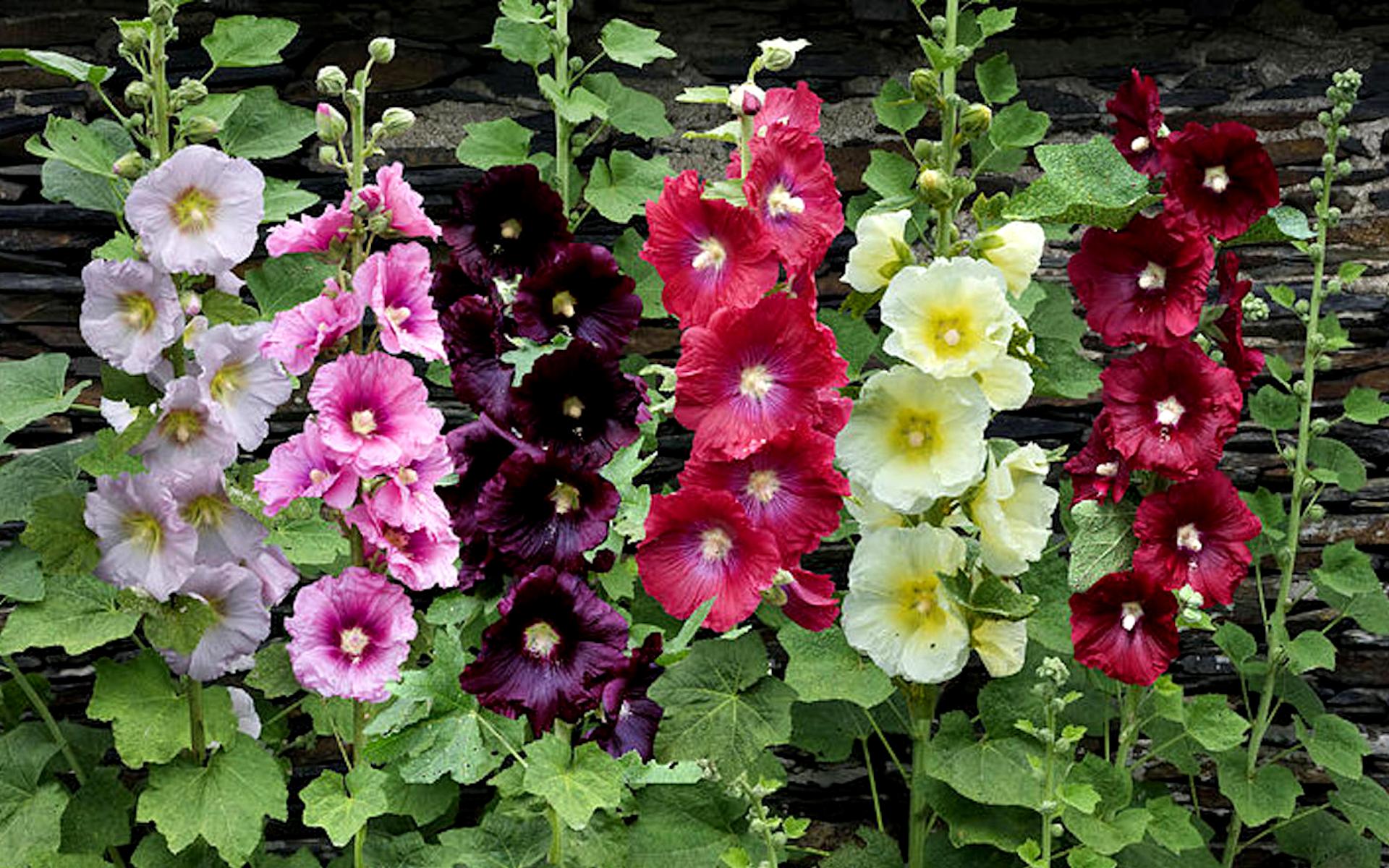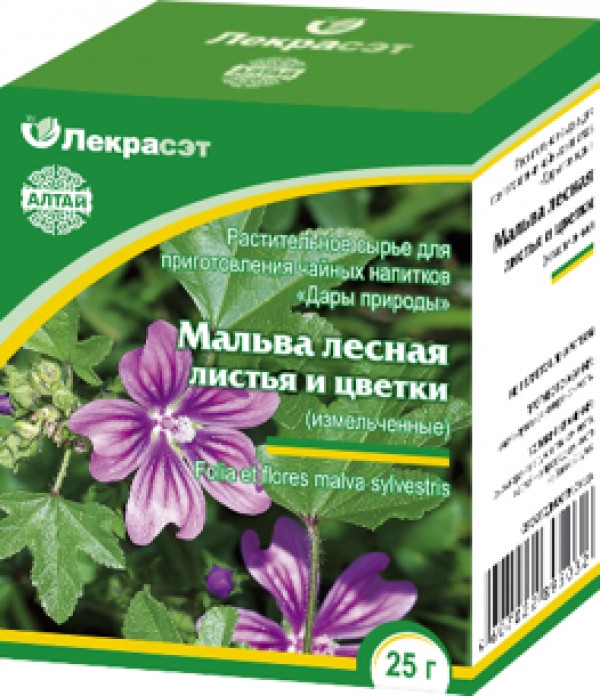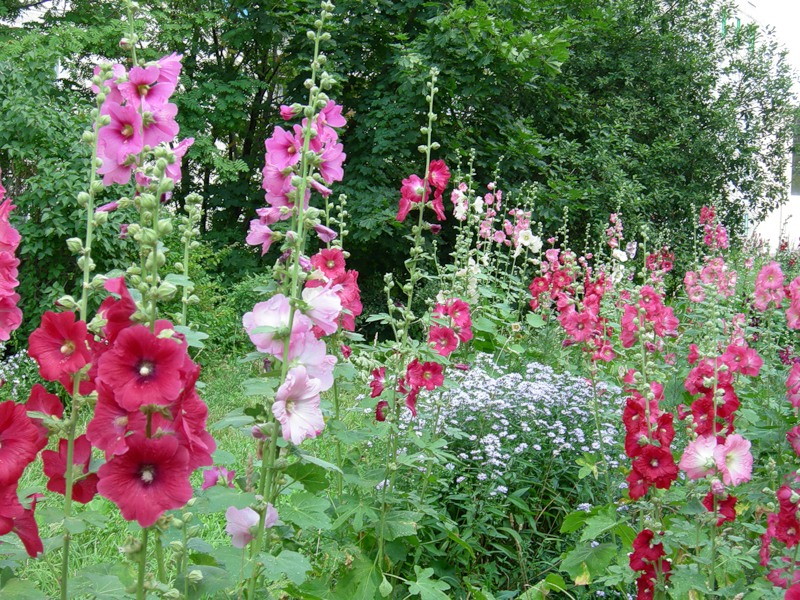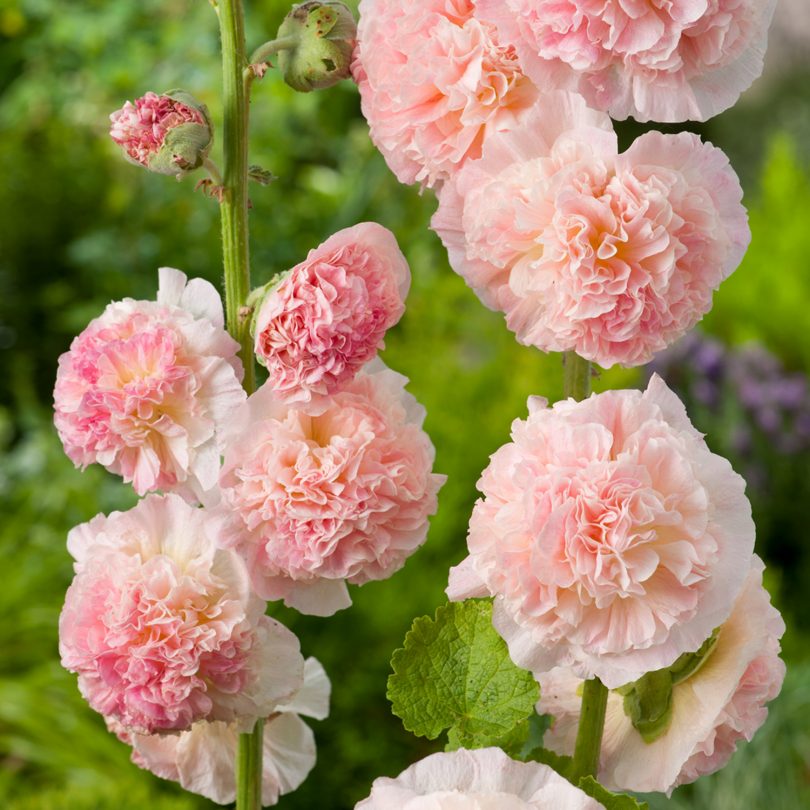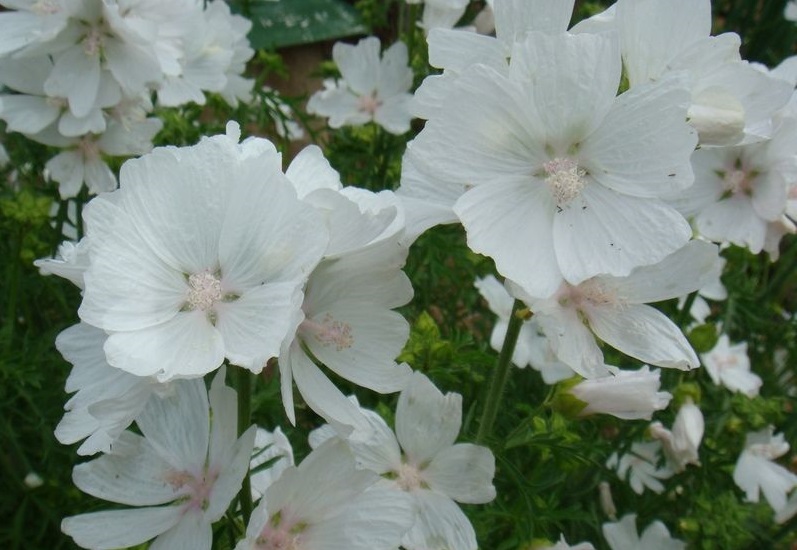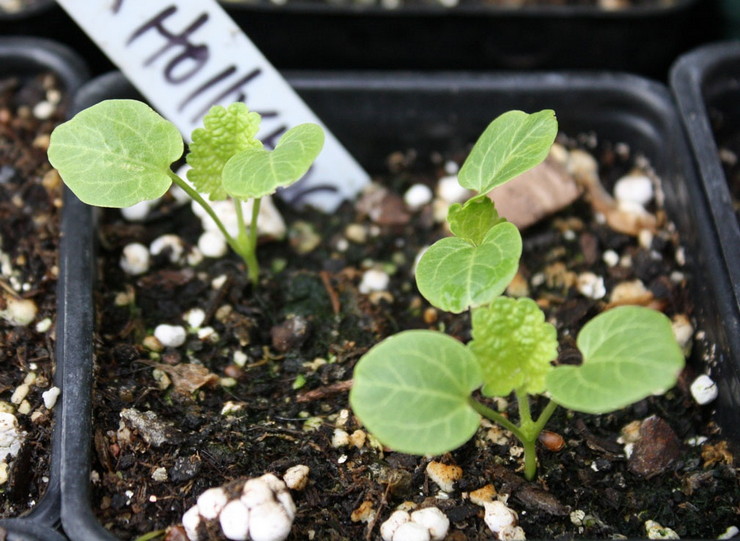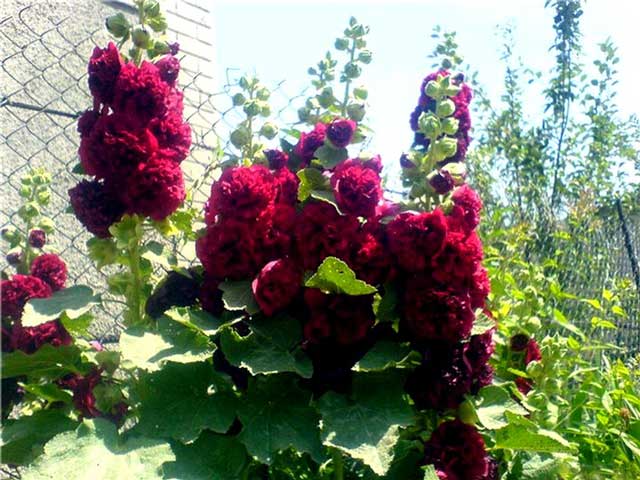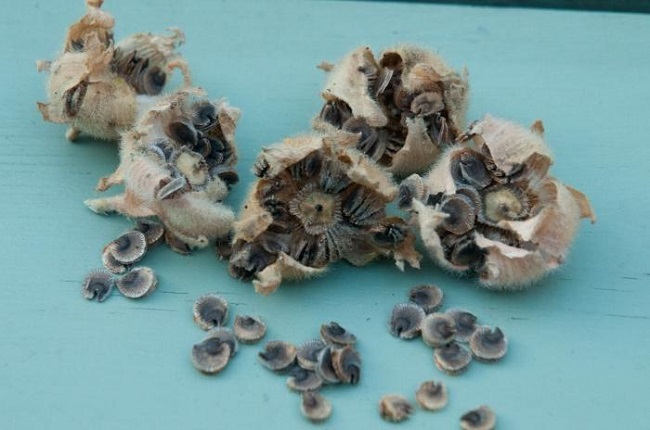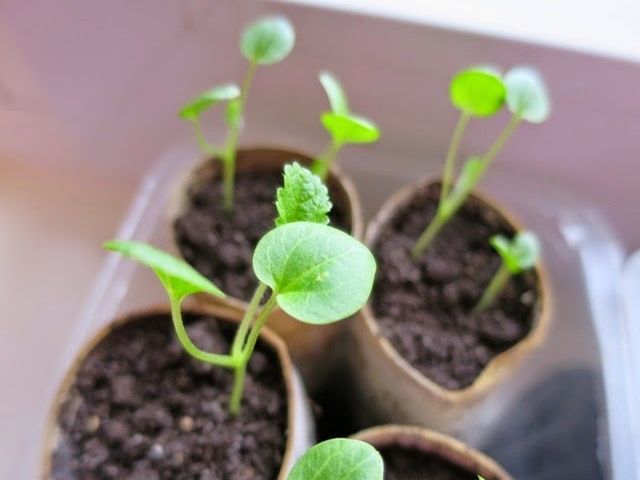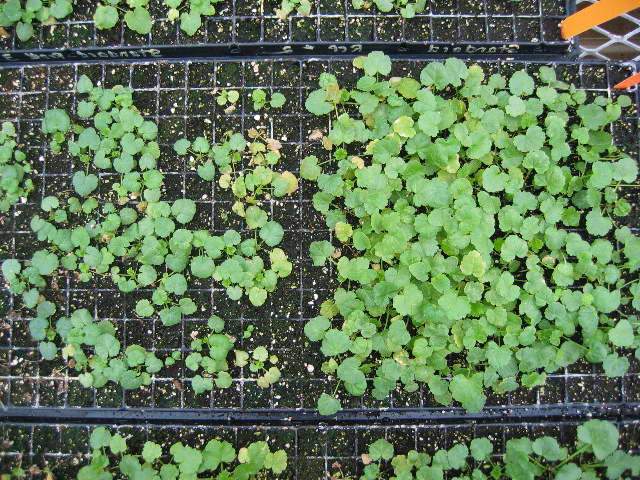Content:
Malva means "the need to rule." And she really dominates the autumn colors. Mallow can be found everywhere, except in permafrost areas. And the tropics and subtropics are optimal for the growth of this plant.
There are more than 25 varieties of the flower in the world, and they call it differently everywhere. The names of marshmallow, kalachik, lavatera, chinabelia, mallow, stock-rose, familiar to many, are all about the mallow flower.
Biological similarity of species
All types of mallow are united by the biological similarity of the bud structure. Although it can be difficult to find similarities in the general species of plants.
Three-leafed podachechny, five-part calyx, five petals and the same amount of gynoecium. The latter are collected from a large number of carpels. The fruit consists of many achenes.
The plant is very unpretentious, if not weedy. It is a relative of African baobabs. You can meet him anywhere. But the species bred by selection are cultivated as decorative.
Of course, gardeners plant a flower for beauty. Unpretentiousness and long flowering make it a welcome guest on the site.
The healing properties of the plant
Mallow is not only beauty. Flowers also have medicinal properties. A decoction of flowers is successfully used as a cough, helps to get rid of catarrhal symptoms of the throat. All parts of the plant are suitable for hot baths for spleen diseases. In ancient Egypt, the seeds of the plant were used to destroy pathogenic microbes in the respiratory organs.
The Arabs ground the seeds along with coffee beans, the Chinese and Tibetans used them as a seasoning for the first and second courses. In industry, burgundy mallow petals were used for dyeing wool, making ropes. In agriculture, mallow is harvested for livestock feed.
General characteristics of species
Malvaceae are annual, biennial and perennial. They are herbaceous bushes with straight, inclined or recumbent stems. Height from 30 cm to 3 m. Leaves differ from species to species. There are heart-shaped, seven-lobed, five-lobed, corrugated, velvety and glossy. The buds are hidden in the leaf axils, either one at a time or five at a time. There are very few varieties with paniculate inflorescences. The petals of the buds are paneled with outward curving edges. They bloom actively from June to the end of September. The root system is quite branched, deeply embedded in the soil. Even at a dry temperature of + 45 ° C, the plant can extract water using three-meter roots.
Pollination in malvaceous plants is mainly cross-pollination. Depending on the terrain, pollinators are insects, forest birds (hummingbirds, for example), bats. There are also many varieties of self-pollinating (hibiscus, stocky mallow). The fruits are a capsule (hibiscus) or kalachik.
Characteristics of species and varieties of crops
Having a long history, mallow flowers still attract with their flowering and variety of species.
Hibiscus, known to many, also belongs to the Malvaceae family. This species is also known as Sudanese mallow. This biennial grows up to 3 meters in height and can look like a bush or a tree.In good conditions, the branches are covered with large red flowers (the diameter of the bud is up to 10 cm).
The dried petals are used for brewing tea, as an anti-inflammatory, diuretic. A cold drink lowers blood pressure, and a hot drink raises it.
Mallow wrinkled (Chaters Double Pink) is known as the stock-rose.
Favorite varieties of flower growers:
• Majorette Mixed - a small bush (just over half a meter) blooms with multi-colored semi-double buds;
• Pinafore Mixed is a neat meter high bush. Multi-colored buds can be single or multi-layered, matte and shiny;
• Chater's Double Strein - a two-meter stock-rose with peony-shaped double buds. The flower diameter is about 15 cm.
Alba musk mallow is a bush (height up to 100 cm), with small pinkish flowers. This type is distinguished by a thick, musky aroma.
The following varieties of musk mallow are appreciated by amateurs:
• White perfection - low (50-60 cm), fluffy shrub with a head of whitest flowers;
•White Tower. The flower reaches a height of 70 cm, has snow-white flowers. Used in making bouquets;
• Pink Tower - a related species with the White Tower, only the mallow color is pinkish. These two varieties look very good in one composition.
Planting and caring for mallow
How the mallow will look depends on where it is planted. This beauty loves sunny areas, although it will also grow in the shade. But abundant flowering can hardly be expected. Also, the delicate petals of the buds do not react well to gusty drafts. Branches tend to break from powerful wind gusts.
The soil
It has no special complaints about the soil. Light earth and good drainage. If the soil is poor and dense, it is recommended to add sand to the soil and apply potassium-phosphate fertilizers when digging. It is also good to regularly cover the root zone with humus.
The root system is prone to decay with prolonged stagnation of water.
Pruning
In late autumn, when the last buds have disappeared, the stalks of the mallow are cut short. It is important that the flower does not waste resources on the formation and ripening of seeds. If the pruning was done in early August, then after this operation, the stem often grows back and blooms again.
There are growers who consider unnecessary pruning and only offer to pick off faded buds. But this does not apply to the stock rose. A short-cut stump leaves in winter in this form. Just to protect the roots, it will not hurt to cover the perennial mallow with dry leaves or spruce branches (spruce, pine, juniper). The shelter will also serve as protection from disease in unstable weather.
In the case when seeds are needed, the flowers are not removed, but the seeds are allowed to ripen. Mature seeds are tightly collected in the form of a ball. When sowing, they need to be split into separate seeds.
There is an experience of sowing directly in rolls. Under optimal conditions a very lush bush grows.
All this will allow you to achieve a long, lush flowering shrub.
Care rules
Representatives of the malvaceous family are very unpretentious.
The following rules will matter:
- watering. In the central regions of Russia and in the Black Earth Region, it is enough to water the mallow plant 1-2 times a week, but abundantly. Especially during the budding period. In severe drought, watering can be increased (both the frequency and the volume of water). In case of heavy rain, on the contrary, it is necessary to drain excess water (drainage, groove);
- loosening is done very carefully so as not to damage the roots. The procedure will normalize air exchange in the root system;
- top dressing. Every spring, it is supposed to add (dig into the root zone) organic matter such as peat, rotted manure, compost. The recommended rate is 3 kg per 1 m². They are also used instead of mulch, in addition to the main fertilizer.Immediately before the formation of buds, it will be useful to add special compositions for flowers (garden preparations Bud, Energen, Agricola)
- garter. Due to the high growth of the stems and their fragility, it is recommended to tie them to a peg. If the mallow is planted along the fence, then instead of pegs, you can use the fence rails directly.
It is also worth remembering that the mallow shrub does not respond well to transplants. If the roots are damaged, it may die or it will hurt for a long time. It is better to immediately choose a permanent place of growth.
Mallow breeding methods
There are three ways to grow mallow:
• seeds;
• cuttings;
• seedlings.
Sowing seeds is usually done in June. You can sow on a plowed area without deepening or just over the surface and sprinkle with a thin layer of earth. You can draw shallow grooves and plant the material already there. The distance between future bushes is chosen depending on the species. Tall ones are sown 60-70 cm apart, and compact varieties - up to 0.5 m.
With regular watering, shoots will break through in two to three weeks. And the mallow will bloom next season. To accelerate germination, it is worth soaking them for a while (3-4 hours) before sowing. Under good conditions, seedlings will hatch after half a month. After a couple of weeks, it is necessary to remove the extra shoots, leaving the strongest seedling (the extra ones can be planted in another place).
You can plant the plant with seeds in the fall. Only the seeds are already planted deeper (2-3 cm). The plant variety is also taken into account when planning seeding. Autumn crops are covered with peat or humus and covered with a good layer of dry leaves or straw for the winter.
Cutting is very important when breeding varietal forms. Hybrids, when propagated by seeds, do not transmit parental qualities. What kind of plant will turn out is unknown. The grafting process is possible in spring and summer. In the first case, the root branch is cut off, and in the summer - from the summer branch.
For planting cuttings, you should prepare pots with fertile soil, a sharp knife, and crushed coal.
The preparation and the procedure itself are as follows:
- The stalk is cut with a sharp knife.
- The wounds are covered with crushed coal.
- The stalk is stuck into the soil of the container and watered well.
The survival rate with this breeding method is not very high. Therefore, planting material needs to be prepared more than flowers are needed.
For seedlings, seed is sown in March - April. The technology is the same as for sowing in the ground. The difference is that with early spring planting of seedlings on the site, the flowering of the plant is possible already in the first season (like an annual).
For sowing, use small containers with fertile soil (it is better to use ready-made flower soil). The seeds are not buried deeply. Watering is plentiful and regular. It is important to observe the temperature regime (+18 and above). The room with seedlings must be protected from drafts. With friendly shoots, a dive is allowed, but when 3-4 leaves appear. 1-2 weeks before planting on the site, the plants are taken out into the air for acclimatization.
Major diseases, crop pests and control measures
The mallow flower is quite resistant to disease. But as a light-loving plant, it does not tolerate lingering rainfall (or excessive watering). It can easily be affected by powdery mildew, rust or stem cancer. In case of detection of a disease, the removal of all damaged parts and treatment with a fungus agent is urgently required. Trichodermin, Bordeaux liquid, colloidal sulfur will do.
The succulent stems and leaves of mallow can attract aphids and spider mites, especially if they affect nearby plants. Treating the flower garden with insecticides will help remove these pests. Fitoverm, Fufanol, Kinmiks have proven themselves well.
For all its unpretentiousness, the mallow is incredibly beautiful. There are so many varieties and they are so different that only from them one can make the most picturesque compositions. Mallow can be planted in a flowerbed, separately in the form of an island, in the front garden of the cottage, along the fences. Also, its thickets can hide unsightly areas of the garden.
Novice gardeners usually choose exotic plants that are new to the area, but over time they still come to understand the charm of mallow. This has been going on for more than three centuries. What is mallow? Malva is love forever. And there is no feeling that it will pass.
